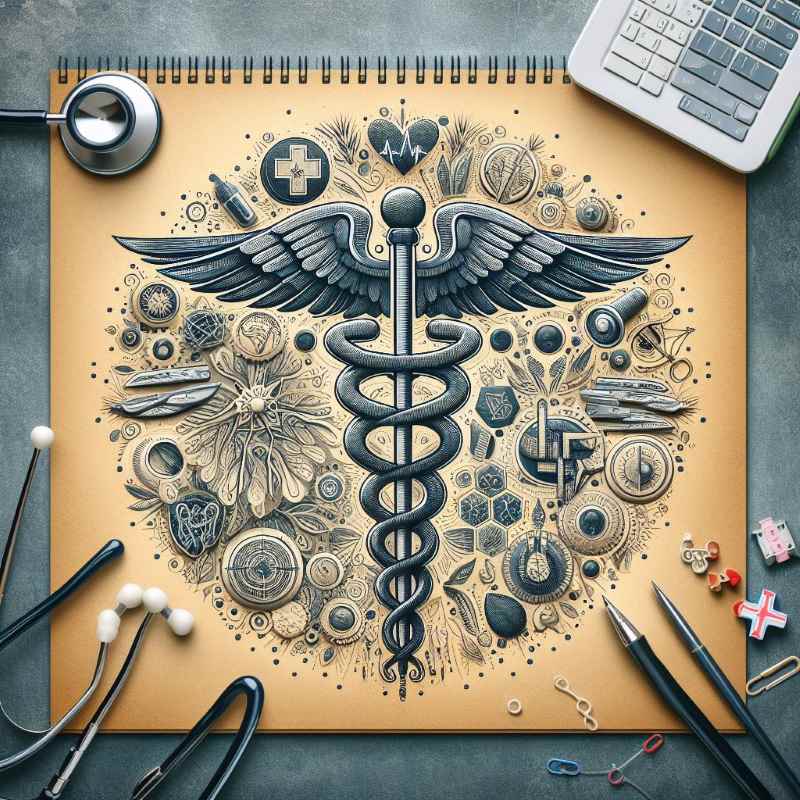
NEET, conducted by the NTA, serves as a single-level entrance exam for medical aspirants aiming for admissions to medical/dental colleges nationwide. Annually, the exam witnesses a significant increase in the number of applicants and test-takers.
Absolutely, maintaining coordination and adherence to guidelines is crucial for the smooth conduct of exams, especially on such a large scale as NEET. The NEET Exam Day Guidelines, released by the NTA, provide essential instructions covering document requirements, dress code, prohibited items in the exam hall, and other pertinent information. These standardized guidelines promote uniformity and help prevent confusion among students, contributing to the overall efficiency of the examination process.
The NEET exam day guidelines issued by the NTA include strict adherence to specified do’s and don’ts to ensure a smooth examination process. These guidelines provide detailed instructions to assist students in navigating the exam hall effectively and avoiding any disruptions. Key aspects covered in the guidelines include:
- Timeline: A schedule outlining the sequence of events and their respective timings on exam day.
- Exam pattern & marking scheme: Information regarding the structure of the exam and how answers are evaluated.
- Dress code: Guidelines specifying the attire that candidates must adhere to while appearing for the exam.
- Barred items: A list of prohibited items that are not allowed inside the exam hall to maintain the integrity of the examination.
- Exam day instructions: Essential directives to be followed by candidates on the day of the exam to ensure a seamless experience.
- Highlights: Key points summarizing the most important aspects of the exam day guidelines for quick reference.
By following these guidelines diligently, candidates can contribute to the efficient conduct of the NEET examination and minimize any potential disruptions.
Absolutely, having a clear understanding of the timeline of events on the NEET exam day is crucial for candidates to ensure a smooth and stress-free experience. It’s recommended that candidates arrive at the exam venue at least 45 minutes before the scheduled start time of the exam. This allows ample time for registration, security checks, and settling into the exam environment. Being well-prepared and punctual helps candidates align with instructions and avoid any last-minute confusion or disruptions on the exam day.
NEET EXAM DAY GUIDELINES –TIMELINES
Certainly, here’s the timeline of events for the NEET 2024 exam:
| Event | Corresponding Date and Time |
|---|---|
| NEET 2024 Exam date | May 5, 2024. |
| NEET 2024 Exam timing | 02:00 pm to 05:20 pm |
| NEET 2024 Exam Duration | 3 hours 20 minutes |
| Occupying seats in the exam hall by | 1:15 pm onwards |
| Last entry time to the exam hall | 1:30 pm |
| Invigilator verifies admit cards and makes important announcements | 1:30 pm to 1:45 pm |
| Distribution of exam booklets | 1:45 pm |
| Candidates fill out particulars in the booklet | 1:50 pm – 2:00 pm |
| Commencement of exams | 2:00 pm |
| Conclusion of exams | 5:20 pm |
This table outlines the sequence of events along with the corresponding dates and times for the NEET 2024 examination.
NEET MARKING SCHEME AND EXAM PATTERN
Certainly, here’s the table summarizing the NEET 2024 exam pattern and marking scheme:
| Aspect | Details |
|---|---|
| Number of Questions | 200 MCQs |
| (Candidates must answer 180 out of 200) | |
| Total Marks | 720 marks |
| Exam Mode | Offline mode only (pen and paper-based) |
| Type of Questions | Objective type with 4 options |
| (1 correct option) | |
| Duration of Exam | 200 minutes (3 hours 20 minutes) |
| Subjects | Physics, Chemistry, and Biology |
| Language | English, Hindi, and 11 other languages |
| Marking Scheme | +4 marks for each correct answer |
| Negative Marking | -1 mark for each wrong answer |
This table provides a concise overview of the NEET 2024 exam pattern, including the number of questions, total marks, exam mode, subjects, language options, and the marking scheme, including negative marking.
NEET EXAM DAY GUIDELINES–DRESS CODE
The NEET exam imposes a strict dress code to maintain integrity and fairness during the examination process, especially considering the increasing number of applicants each year. Here are the guidelines for the NEET dress code for both males and females:
NEET Dress code for males:
- Full-sleeves shirts/T-shirts are not permitted.
- Clothes should be devoid of pockets, zips, big buttons, or layers.
- Opt for simple pants/shirts and avoid kurtas and pyjamas.
- Avoid layering clothing.
- Choose light slippers/sandals; avoid boots or covered footwear.
NEET Dress code for females:
- Keep attire simple without embroidery, frills, or layering.
- Wear half-sleeved Kurtis/shirts; long, fancy sleeves are not allowed.
- Avoid all types of metallic or non-metallic jewellery.
- Opt for slippers or open sandals; avoid fancy footwear like boots or heels.
Candidates unable to comply with the dress code due to religious reasons should specify this in the NEET application form under “Customary dress.” These candidates must arrive at least one hour before the exam for proper security checks and frisking procedures.
Adhering to the NEET dress code is essential, as failure to comply may result in serious consequences, including disqualification from the exam. These guidelines help maintain fairness and prevent any unfair advantage during the examination process.
NEET EXAM DAY GUIDELINES–BARED ITEMS
Candidates appearing for the NEET exam must adhere to strict guidelines regarding the items they are prohibited from carrying into the examination hall. Here is a list of barred items:
- Stationery Items: Pens, pencils, geometry boxes, erasers, sharpeners, calculators, writing pads, textual materials, log tables, and similar items are not permitted.
- Electronic Devices: Mobile phones, pen drives, scanners, electronic pens, Bluetooth devices, earphones, microphones, pagers, health bands, and related accessories are strictly prohibited.
- Personal Accessories: Goggles, handbags, wallets, belts, caps, watches/wristwatches, cameras, bracelets, and similar items are not allowed.
- Eatables and Drinks: Candidates are not allowed to bring any eatables, whether open or packed, or water bottles into the examination hall.
It’s essential for candidates to note that the exam center will not take responsibility for any belongings brought into the examination hall. Therefore, candidates are advised to carefully adhere to these guidelines to avoid any inconvenience or disciplinary action during the examination.
EXAM HALL INSTRUCTIONS
Here are the instructions to be followed in the NEET exam hall:
- Assemble in your exam room by 1 pm.
- Only the NEET Admit card and a photograph will be allowed inside the exam hall.
- Impressions of the candidates’ fingers will be taken on the attendance sheet.
- 15 minutes before the exam commences, candidates will be provided with the booklet to fill in particulars.
- Invigilators will announce timings at the beginning, halfway through, and towards the end of the exam for the convenience of students.
- Candidates will be asked to sign the answer sheet twice – first at the beginning and then after the exam concludes.
- Invigilators will provide candidates with a ballpoint pen.
- Around 5 minutes are provided for candidates to unseal the booklet and check the number of pages.
- Ensure the same code is mentioned in the test booklet as the answer sheet enclosed in the test booklet.
- Both sides of the OMR answer sheet must be filled.
- Before leaving the exam hall, candidates must submit the OMR sheet to the invigilator. This is mandatory.
Following these instructions diligently will ensure a smooth and orderly conduct of the NEET examination.
HIGHLIGHTS OF THE NEET EXAM DAY GUIDELINES
- Required Documents: Candidates must bring the NEET Admit Card, a passport size photo identical to the one uploaded on the NEET Application form, a credible ID proof, and a PwD certificate if applicable.
- Reporting Time: Candidates must enter the exam hall by 1:30 pm, which is the last reporting time. No candidates will be allowed entry after 1:30 pm.
- Seating Arrangement: Each candidate will be assigned a seat and roll number. Candidates must locate their seats and occupy them promptly.
- Posture and Video Recording: Candidates are advised to maintain a firm, upright body posture and face the camera when it approaches, as they will be video recorded.
- Barred Items: Candidates must ensure they do not possess any of the barred items listed in the guidelines, either intentionally or unintentionally.
- Additional Items: It is recommended not to carry any additional items, as the exam center will not take responsibility for any belongings.
- Test Booklet: Candidates must ensure that the test booklet contains the same number of pages as stated on the cover.
- Eatables/Beverages: No eatables or beverages are allowed in the exam hall. However, candidates with genuine medical conditions will be allowed after supervision.
- Leaving the Exam Hall: Candidates cannot leave the exam hall before the conclusion of the exams. Before leaving, the OMR sheet must be submitted to the invigilator.
Adhering to these guidelines will ensure a smooth and orderly conduct of the NEET examination.


2 thoughts on “A Complete Guide to the NEET Exam: Structure, Clothes Code, Prohibited Items, and Exam Room Guidelines”